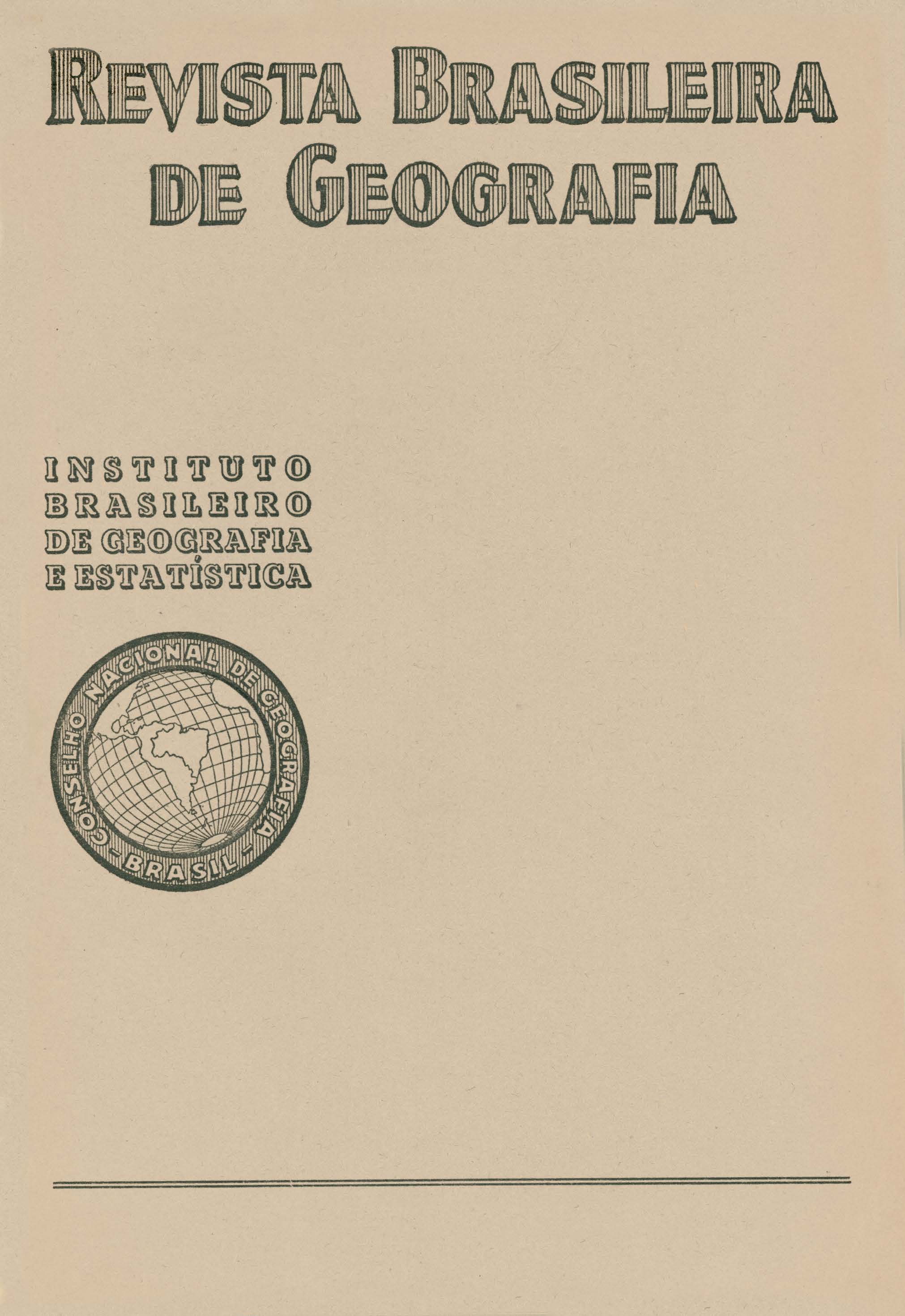O Problema das “frentes pioneiras” no estado do Paraná
Palavras-chave:
Paraná, Geografia da População, Geografia Econômica, Colonização, Fronteiras e PioneirosResumo
In general, when thinking of a pioneering frontier, we make an idea of a continuous line which would limit the still virgin regions and the region which is grubbed up
In Paraná we cannot observe a classical pioneer frontier, because the pioneers of this area did not advance in a continuous stream, but they gathered in small groups, in some cases isolated from each other by many kilometers of virgin land. On the other hand, the private lands which margin the roads or the paths generally were populated temporarily by settlers or pioneer "caboclos" who at times they practiced a primitive agriculture and later on advanced into the jungle. In spite of the fact, that the grubbing up of Paraná and the first settlements go back to about 50 years, this State in some of its regions still has the characteristics of pioneering, and this, due to its small population, the lack of contact with the great centers and its inhabitant's primitive ways of cultivating the soil. However, we cannot call Paraná a pioneering region, except for the settlers there established by the Federal or State Government, with the purpose of occupying progressively and definitely the existing reserves of the virgin land It is only in this case that we can really recognize a pioneering frontier
On the contrary of what was verified in the third table land (plateau) in the South of Ivaí, the northern part of the State was left completely deserted, and its exploration and grubbing up has been done in a regular manner, advancing toward the West, not in a form of a belt, but just like a spoke pointed to the confluence of the rivers Paranapanema-Paraná. There we can really find a pioneering frontier, a classical one, whose progress is easy to follow and observe The line of the present pioneering frontier of Paraná, can be outlined, however, in the northern part of the State and the recent colonist areas in the valley of Xopim and between the rivers Ivaí and Piquiri In other zones such as the one situated between the rivers Piquiri and Iguaçu, the opening of a road or a path caused lots of times a settlers rush which resulted the quick grubbing up of the country, but not the permanent settlement of colonists. Though along those paths of penetration we find here and there some inhabitants or a small gathering, within a short distance we have the virgin forest. However, this virgin forest most of the time is not grub up by pioneers and if there is a pioneer zone near the virgin woods, this zone is not spreading towards the forest, it does not try to penetrate into it
The study of the zones and pioneering fronts of Paraná shows us the impossibility to establish, in most of the cases, a clear cut limit, between the colonized and those to be colonized areas. This fact is a logical consequence of the nuclear or spontaneous colonization, which till the last decade was common throughout the western part of the State. There was not any pioneering belt advancing regularly west, leaving behind it a grubbed up area and possessed land In view of this system of colonization, it is very rare to find real virgin land in the southern region of the State of Paraná, however its population is extremely scanty and its colonization should be carried on in a different way, and we may that this has been achieved in regards with the recently settled colonists, by the State Government. As to the settlements of the northern region of the State, the initiative of the "Companhia de Terras do Norte do Paraná" has been successful in its accomplishments.






